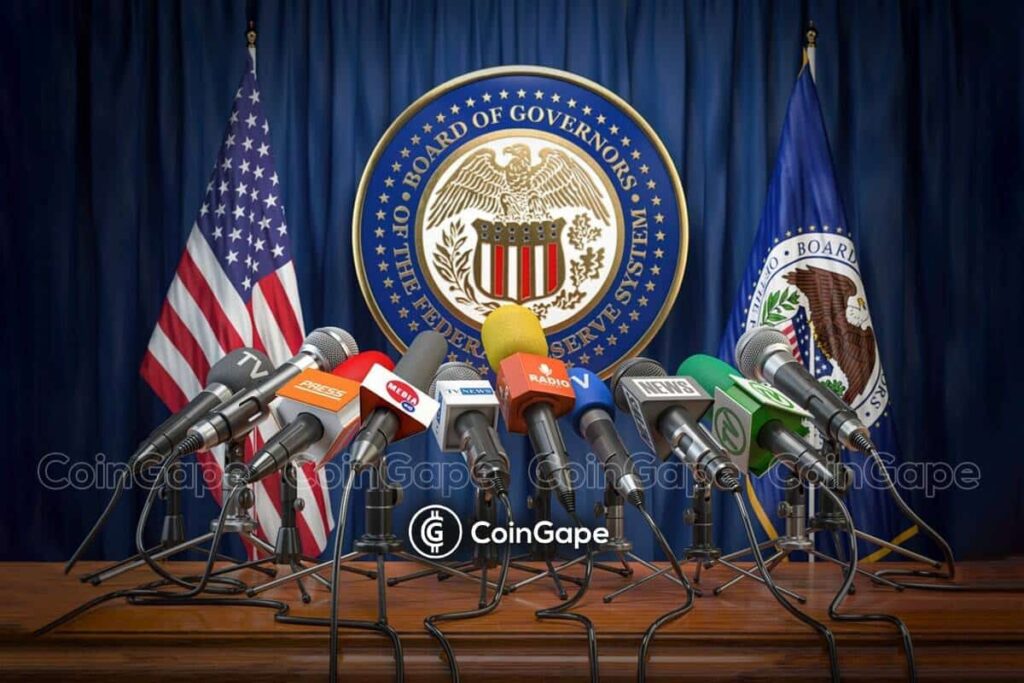Navigating the Future: Key Insights from the US Federal Reserve Payments Innovation Conference
The US Federal Reserve is poised to make transformative decisions regarding digital assets at its much-anticipated Payments Innovation Conference on October 21. With significant names from both the cryptocurrency and traditional finance sectors in attendance, the event is set to uncover vital implications for the market. As investors are keenly waiting for insights, this conference promises to help chart a course through the evolving landscape of digital finance.
A Pivotal Moment for Crypto Regulations
Announced on September 3, the conference aims to address the pressing need for enhanced crypto regulations in the United States. Under the leadership of Governor Christopher J. Waller, who is set to both open and close the event, discussions will center around how emerging technologies are fundamentally reshaping the global payments environment. The primary objective is to evaluate how innovations can enhance the “safety and efficiency” of transactions while remaining adaptable to the dynamic needs of consumers and businesses alike.
Diverse Panel Discussions: Bridging Traditional Finance and Digital Assets
Expect a wide-ranging exploration of topics during the conference, such as the integration of traditional finance with the burgeoning digital asset economy. Panelists will delve into the intricacies of stablecoin business models, as well as the role of artificial intelligence in modern payment solutions. An eagerly awaited segment will focus on tokenized financial products, which represent a significant evolution in how assets are conceptualized and traded. With executives from iconic firms like BlackRock, Franklin Templeton, and BNY Mellon slated to share their insights, the conference is set to be a melting pot of innovative ideas and practical solutions.
A Historic Engagement Between Traditional Finance and Cryptocurrency
For the first time, the Federal Reserve is publicly engaging with influential industry leaders concerning Bitcoin, stablecoins, and tokenized assets. This marks a significant shift in the US financial landscape, as discussions could lay the groundwork for the integration of crypto payments into the mainstream financial system. The potential ramifications of this engagement cannot be overstated, particularly given the rapid advancements and evolving consumer demands in the digital asset space.
Influences of Past Policies on Today’s Crypto Landscape
The backdrop of this conference is shaped by policy reforms instituted during the Trump administration, which significantly changed the regulatory landscape for cryptocurrency. By reversing previous restrictions that hampered banks from servicing crypto firms, the Federal Reserve has opened new avenues for regulatory oversight and collaboration. The cessation of the supervisory program aimed at digital-asset institutions, coupled with the removal of “reputational risk” flags, has made it easier for these firms to access financial services. With the recent passage of the GENIUS Act in July, the momentum for blockchain innovation has reached unprecedented heights, setting a favorable stage for the discussions to come.
Implications for Monetary Policy and the Crypto Market
The timing of the conference aligns perfectly with pressing monetary policy considerations. The Federal Open Market Committee (FOMC) is scheduled to meet again on October 28–29, with speculation surrounding another potential 25 basis point rate cut, which would lower the federal funds rate to approximately 4%. The backdrop of a recent rate cut amidst a slowing labor market highlights the Fed’s struggle with inflation and its broader economic impacts. Governor Waller’s remarks about the complicated effects of Trump-era tariffs emphasize the ongoing challenges facing monetary policy. If executed, another rate cut could infuse liquidity into financial markets, which could serve to benefit the crypto marketplace, further encouraging investment and interest in digital assets.
A Glimpse into the Future of Digital Finance
As the Payments Innovation Conference approaches, the anticipation surrounding its outcomes reflects a significant moment in the convergence of traditional finance and the burgeoning world of cryptocurrency. The discussions and insights generated at this event may not only influence immediate market reactions but could also help ensure a more integrated and robust regulatory framework for digital assets in the future. With the US Federal Reserve stepping into a leadership role in the dialogue surrounding crypto, stakeholders across the financial spectrum are keen to understand how these developments will shape the landscape of digital finance for years to come.
In summary, the implications of the Federal Reserve’s Engagement in the digital asset space will likely resonate far beyond the conference. As a focal point for discussions on critical issues, this event holds the promise of setting a new regulatory tone that could ultimately enhance the safety and efficiency of payments, benefiting consumers, businesses, and investors alike, and paving the way for a more robust digital economy.


